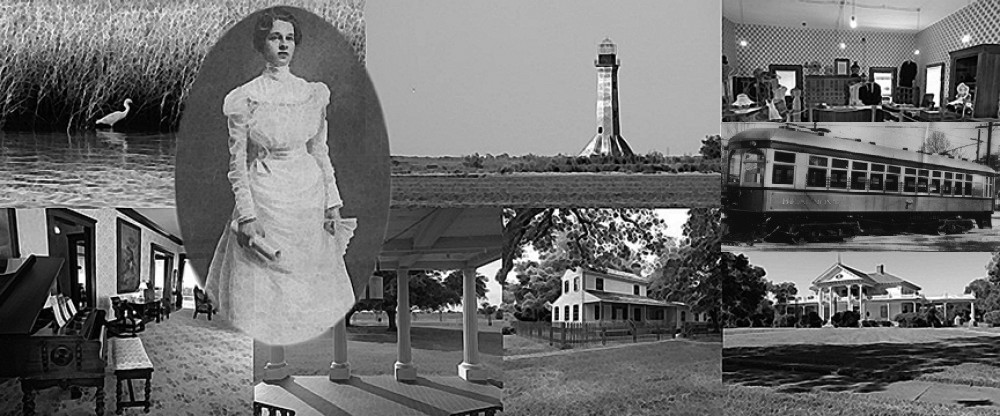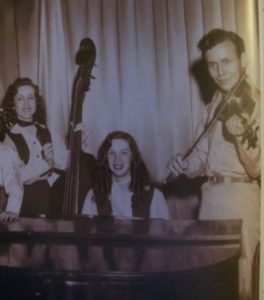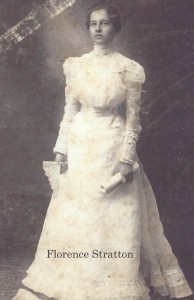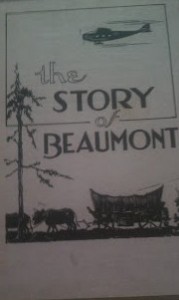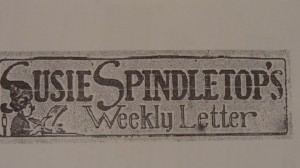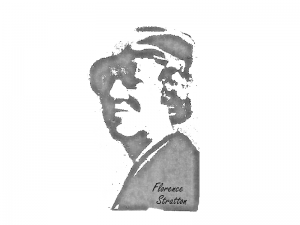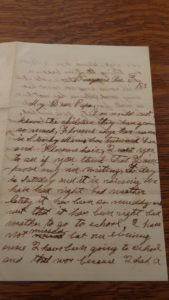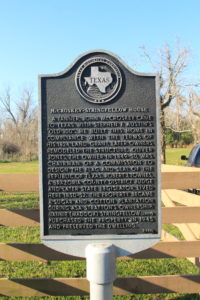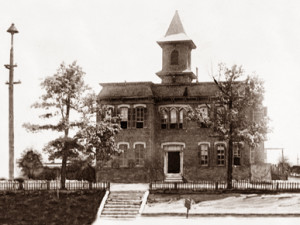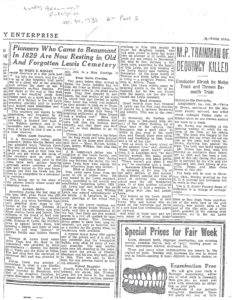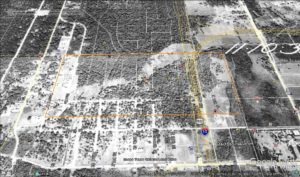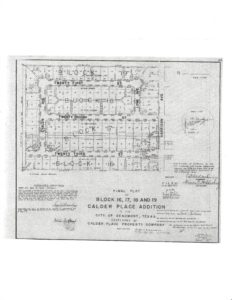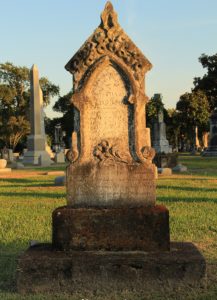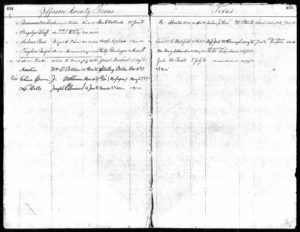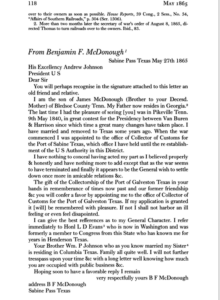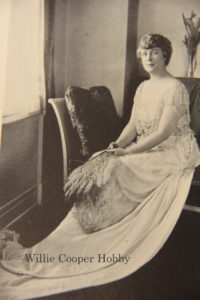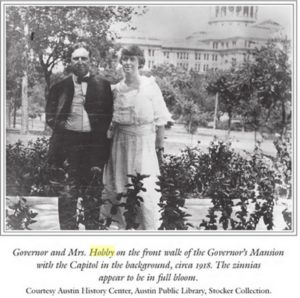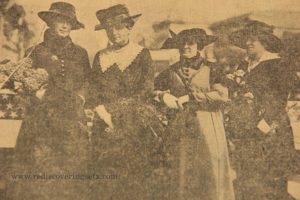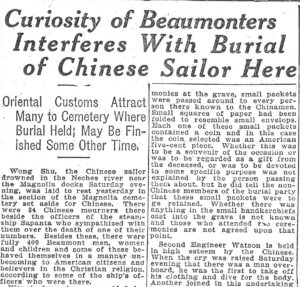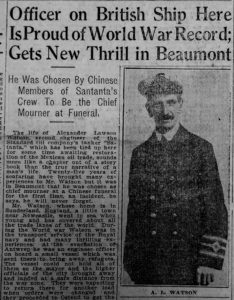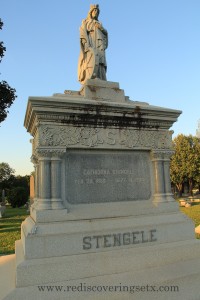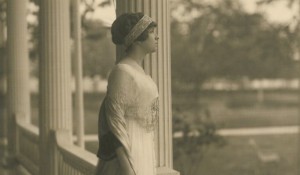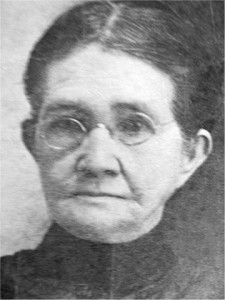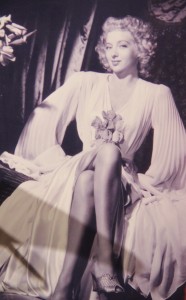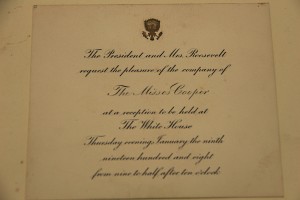In December 2015, I wrote an article about Virginia Rowley, a young girl whose tragic death is shrouded in mystery, not least because of the poem on her gravestone. Although we never really learned the reason for the poem, we did find out about the many triumphs and tragedies of the Rowley family. I tried to present just the facts without adding speculation to the mix. I figured Virginia, or “Gene” as she was sometimes called, was owed some respect.
About a week before Christmas I received a message from a family member doing genealogical research on the Rowleys. They had found my article, and fortunately my research had helped them in their own quest to find out more about the family. I only mention this because in our correspondence, I also gained some information on the younger siblings. While doing my research, I was not able to find out what became of the younger Rowleys. Since then, I’ve dug a little deeper and found out a bit more about Gene’s younger siblings, Vera and Jerry. I thought it might be poignant to look back at their accomplishments as well.
A search through newspapers such as the Port Arthur News, the now-defunct Port Neches Chronicle, and the Nederland Midcounty Review revealed a few early accounts of the siblings performing at recitals and such, but it wasn’t until 1947 that the Rowley duo—Jerry, who sang and played the fiddle, and Vera (nicknamed Dido), who also sang and played bass and sometimes guitar—became a trio following the marriage of Jerry to Evelyn Jo Deloney that November. Nevertheless, it was only in the early 50s that their talents began to be noticed.
In reading through a few articles and George Jones’s book I Lived to Tell It All, I learned that the Rowley Trio got their start as a backup band at KFDM radio in Beaumont. Jones writes
Shortly before I worked with Dalton I played with the Reily Trio, made up of a brother, his wife, and his sister. That was at KFDM in Beaumont, where we did a live show at 5:30 a.m. That job didn’t last very long because I couldn’t stand getting up that early and because the Reilys left Beaumont to play in the band of Lefty Frizzell, the country music legend who had big hits on Starday Records before I later joined the label.
Although Jones uses a different spelling of the name, I am certain that that the “Reily Trio” and the Rowley Trio were one and the same.
After playing for Lefty Frizzell, the writer of such hits as I Love You a Thousand Ways, and If You Got the Money (I’ve Got the Time), the Rowley Trio backed up another well-known up-and-coming star named Johnny Horton in September 1952. The band performed on the country radio show Louisiana Hayride, which was broadcast from Shreveport, Louisiana. The show ran from 1948 to 1960 and would launch many careers during that time, including the likes of Elvis Presley, Hank Williams, Kitty Wells, Jim Reeves, and many more. Although the Rowley Trio did not rise to national stardom during their short stint at the show, they did earn the respect of many of their peers.
In late 1953, the Rowleys parted ways with Johnny Horton, but this was not the end of the trio. Johnny Horton’s manager Fabor Robinson, who had left just before the Rowleys, invited them to his recording studio in Malibu, California. Unfortunately, I could not find any recordings from this era but learned from Dido’s bio that she released a single in 1954 called “The Hands of Time.”
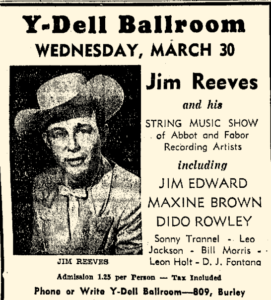 I noticed Dido’s name on a few country show billings around the state in the latter part of the 50s, but nothing of the Rowley Trio. It does appear though that Jerry performed locally given that there are multiple mentions of this in various newspapers. What is clear is that all the members of the trio were living back in the Nederland area by 1957, although Dido would later move to Houston and release a few singles, one of which was written by Don Mahoney. Some of you who grew up in the 60s might remember his name if you had watched KPRC on Saturdays. Don Mahoney had a local television show called Don Mahoney and Jeanna Clare and Their Kiddie Troupers. It was a talent show for kids, but the two hosts emulated Roy Rogers and Dale Evans. If you remember this, then you might also remember Dido. Yes, Jeanna Clare was the stage name Dido/Vera Rowley took while on the show.
I noticed Dido’s name on a few country show billings around the state in the latter part of the 50s, but nothing of the Rowley Trio. It does appear though that Jerry performed locally given that there are multiple mentions of this in various newspapers. What is clear is that all the members of the trio were living back in the Nederland area by 1957, although Dido would later move to Houston and release a few singles, one of which was written by Don Mahoney. Some of you who grew up in the 60s might remember his name if you had watched KPRC on Saturdays. Don Mahoney had a local television show called Don Mahoney and Jeanna Clare and Their Kiddie Troupers. It was a talent show for kids, but the two hosts emulated Roy Rogers and Dale Evans. If you remember this, then you might also remember Dido. Yes, Jeanna Clare was the stage name Dido/Vera Rowley took while on the show.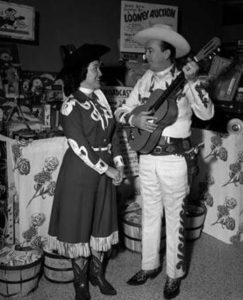
I’m sure there is a lot more to these stories, and in time, I may look into them further. Again, you never know where your research journey will take you. There are just so many rabbit holes to explore…
